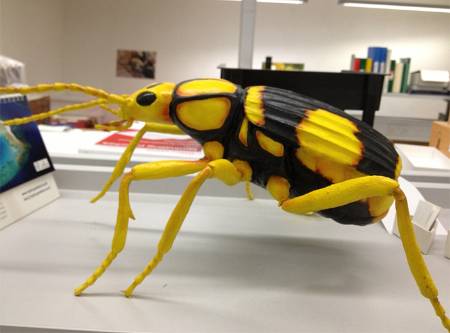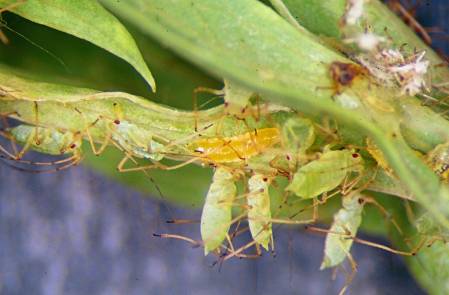Next Friday, 27th of September, the Museum is once more opening its doors to the great and unwashed (oh sorry that is the staff...) for an afternoon and evening finding out what our scientists get up to behind the scenes. It is Science Uncovered 2013!
I’ll start the day in a relaxed fashion... I will be either hosting two or three Dinosnores shows for the kids of Kensington and Chelsea (up to 500 children...). I will be talking about the most venomous and poisonous insects, spiders and scorpions, and bringing out from the collection specimens to highlight these facts.
 The bombardier beetle and its volitile behind...
The bombardier beetle and its volitile behind...
There are always a lot of questions and faces being pulled, as well as some charging round as very angry bees…
Later on in the day we open our doors fully to the after-hours events and it is here that the chaos ensues. There will be hundreds of scientists of all forms and persuasions touting specimens that have rarely been brought out to the public. And amongst those will be me, with me maggots.
There are stations dotted around the Museum with different themes e.g. Antarctica, Evolution, Space and the best one, Parasites and Pests. I was offered a station in the woods but decided that it was parasites that I wanted. I spend a lot of time discussing maggots one way or another and generally in a way that causes people to feel squeamish.
 The maggots will be out in force at Science Uncovered.
The maggots will be out in force at Science Uncovered.
But I thought that it was time to right a wrong. Many of these parasites and pests (the maggots are the dominant - and sometimes only - feeding stage of flies) are actually essential in limiting the effects of pest species as well as maintaining balance within an ecosystem.
So instead of just bringing out my maggots in skin, the jars of myasis flies and so on, I will bring out the adult flies and show everyone common species found in their gardens and talk about what their larvae do. An example is the wonderful Episyrphus balteatus, the marmalade hoverfly which is incredibly common throughout the UK.
 Episyrphus balteatus, the marmalade hoverfly
Episyrphus balteatus, the marmalade hoverfly
I have just been collecting down in the Isles of Scilly and then I high tailed it up to the Cairngorms in the Scottish Highlands. And the marmalade hoverfly was common everywhere I went. This little beauty can crush pollen as an adult but it is the predatory nature of the larvae that I am interested in. These and many other species in this family feed on aphids! They love them! Can’t get enough of them!
Dipterists undercover in Scotland...
Then there are the aphid midges, Aphidoletes aphidimyza, who graze on over 70 species of aphid. The larvae are vicious little predators and can consume over 80 aphids a day!!
 Predatory aphid midges, Aphidoletes aphidimyza.
Predatory aphid midges, Aphidoletes aphidimyza.
And let’s not forget the truly wonderful parasitic flies – the Tachinids, whose larvae live and eat inside many a troublesome insect. Chris Raper, who is one of the leading Tachinid experts, will also be there on the night representing the Angela Marmont Centre for UK Biodiversity – I suspect that he will have a few drawers of flies too….
But I can’t help myself and so I will bring out some of the parasitoids that we would not necessarily approve of, as they kill solitary bees and other associated kin – the Acroceridae or hunchback flies. These are too cute to be real. And yet, they have the most fascinating larvae. These youngsters have two different body forms – one for high-tailing it into the nest and the second for lazing around, gorging themselves till it’s time for them to pupate!
The hunchback fly - cute are they not?
And have I said that there are bars? Always best to grab a scientist in their favoured environment – flies and wine…a winning combination.



